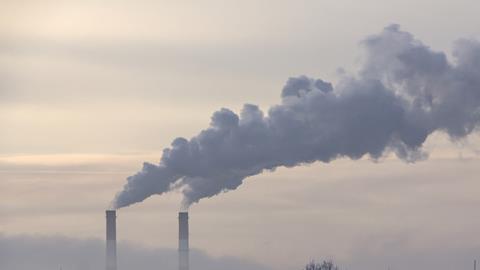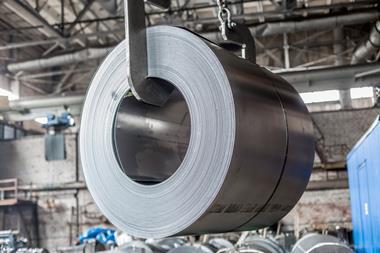What practical steps is the industry taking – and what solutions are on the horizon – to tackle the monumental challenge of carbon reduction? Victoria Hattersley spoke to experts from the Carbon Trust, Amcor, Mondi, Smurfit Kappa and Tetra Pak to get their views on some of the big questions around this issue.
Reducing carbon emissions to avert climate catastrophe is the true existential challenge of our times – far more than Covid or anything else we can conceivably think of. And while the pandemic might have given us some temporary breathing space over the past year as emissions, according to the Global Carbon Budget Report, took a 7% drop, it’s almost certain we will be back on the same destructive path as soon as life returns to what we might blithely consider ‘normal’.
We know all this, and at Packaging Europe we report daily on the steps various members of the value chain are taking to grapple with this task. Some are making real progress, while others readily use terms like ‘circular economy’ and ‘decarbonization’ but have yet to make the kind of substantive changes the situation requires.
None of the people I have spoken to for this piece claim to have all the answers but were happy to share their thoughts on what concrete action might look like. The first question they addressed – and it’s one we will all by now be familiar with – was:
1. Do we need to put the focus on carbon over plastic waste?
The ‘plastics backlash’ is perhaps an overused term but it’s certainly had major reverberations across the industry in recent years. So much so that some would say the focus on the – undeniably dire – issue of plastic waste has drawn attention away from the wider overall climate crisis. Is this a fair representation?
In part, it may come down to a simple case of ‘what the eye can see’. “Obviously the plastic waste is more visible so I think that, even in the perception of government and media sometimes it is put in the same bucket as climate change when really they are very different,” says Gerald Rebitzer, Director of Sustainability at Amcor Flexibles. “Both are very important so I’m not saying we should think of it as one vs. the other, but my personal view is that the climate crisis is the important issue for humanity.”
But for others, they are really two parts of the same thing and cannot be treated separately. “Tackling plastic waste and addressing the climate crisis are both important and often go hand-in-hand,” says Laura Timlin, Director, Business Services at the Carbon Trust. “We know that we need to move away from using fossil fuels in order to help global economies to fully decarbonize – should virgin plastic derived from fossil fuels continue to be used at the current rate, it will comprise 17% of global emissions by 2050. So, reducing reliance on virgin plastic will be crucial to tackling the climate crisis at the same time as addressing the damaging environmental impact of plastic waste.”
Most likely, the solution lies somewhere in-between. We cannot put all our energies into reducing plastic waste when the plastics industry is not even the biggest producer of carbon emissions: but more efficient use of the plastics we do create – and perhaps a greater focus on non-fossil-based materials – could make a real difference. Which leads us on to our next question.
2. What decarbonization routes should the industry focus on?
The above is all well and good: but if this justified urgency is not backed up by concrete action on a systemic scale then we’ll all be left floundering. The people I spoke to have some areas of agreement and some differing views on where the industry should be directing its efforts. What does seem to a source of agreement is that all stakeholders in the packaging sector need to broaden their perspective.
The increased use of recycled content for plastic production is one strand: the world as a whole needs to come to treat plastic as the precious commodity it is. Only then can it be part of the solution, rather than contributing to the problem.
“Utilizing recycled content is very important in a low carbon economy,” says Laura Timlin. “Carbon emissions continue to come from plastic packaging after its disposal – with the amount of emissions dependent on the manner of its disposal. Most plastic packaging has low value and is not recycled but rather incinerated, which not only generates emissions but also wastes resources. Part of this comes down to an increased focus on design for recyclability and resource efficiency, using materials that are part of mainstream recycled pathways.”
While increased recycling and improving the entire infrastructure for this could certainly reduce the overall carbon footprint of fossil-based plastics, we should also consider the role played by the feedstocks themselves.
Some put it more emphatically: “While circular economy policy measures on recycling are essential, we need an environmental approach that includes the decarbonisation of materials and manufacturing, to reduce the impact on our planet. One approach is plant-based,” says Gilles Tisserand, Head of Sustainability Transformation, Tetra Pak Europe & Central Asia. “Plant-based materials are renewable and better for the environment. Renewable resources can be replenished over time and enable a move away from fossil fuel-based products, with a lower carbon footprint and reduced environmental impact. Bioplastics developed from sugarcane are an exciting area and we are continuing to innovate with sugarcane-derived polymers. Already, we’ve launched our Tetra Rex® Plant-based carton, the world’s first and only fully renewable beverage carton.”
And what about reusables? In recent years a considerable amount of momentum seemed to be building around reusable packaging models but this has slowed a little – in part, but not wholly, because of the safety concerns around Covid-19. So how can the industry get reuse back on track, enabling it to play its part in the carbon solution?
“A lot more needs to be done to push this agenda,” says Laura Timlin. “A re-use model provides a compelling way to reduce climate impacts by avoiding emissions associated with single-use packaging. Many brands will need to completely rethink their business model. Not only does a re-use model need to be easy for a consumer but it also needs to help a brand maintain its market value, credibility and competitiveness.”
However, Gerald Rebitzer sounds a note of caution here, reiterating the importance of LCA: “Carbon emissions for reuse models need to be considered so one should only make that change if it leads to lower carbon emissions; for example, if reusable bottles are being shipped a long way that somewhat negates the environmental benefits.”
The above are by no means the only routes to carbon reduction, but it’s a fair overview of the directions in which the sustainability conversation is moving.
3. Should we be materials-agnostic?
Another big question with no simple answer: what of the packaging materials themselves and their respective carbon footprints? Do we favour plastics? Paper? Infinitely recyclable materials such as metal and glass? The crux of this issue is that it’s very hard to quantify the individual carbon impact of any material. By what metric do we measure? The initial production of the material? Distance travelled? Weight? End of life? So many questions – and there are many, many more.
With plastic, for example, its protective properties are undeniable and carbon impact of production is comparatively low, so the issue here is that we are still, globally, falling short when it comes to the appropriate collection, sorting and recycling infrastructure.
According to Gerald Rebitzer, while Amcor uses plastics, aluminium and paper, “from a carbon perspective, for most applications plastics and specifically flexibles are kind of unbeatable. But we need to solve the recyclability question otherwise there will be policies that ban certain plastics and then you go back to metal cans or glass which have a very bad LCA performance compared to plastics – even if they are recycled.”
What about the perspective from the paper industry? How does it counter the argument that paper is far more energy-intensive than plastic to produce and that, furthermore, that the paper industry is currently under less pressure from governments to tackle its emissions?
“It is not a simple matter of evaluating a carbon footprint in isolation,” says Susan Brunner, Senior Sustainability Positioning Manager, Mondi Group. “We also have to consider the energy fuel mix (for paper it’s mainly biomass-based), in particular whether the energy is derived from renewable materials. According to Cepi, the paper industry has lowered its carbon emissions by 27% since 2005 and is the largest industrial generator and user of renewable energy in Europe.”
And other paper producers believe – perhaps unsurprisingly – that we should be moving away from plastics altogether. “Plastic is a fossil-based product and for the moment not easily recycled,” says Steven Stoffer, Group VP of Sustainable Development at Smurfit Kappa. “Even when it is recycled, it will most likely eventually be used as fossil-based fuel for heat generation. From that perspective, it has a delayed use as fossil fuel. Paper will never have that issue.”
Or maybe, in some cases, there should be no packaging at all? “The important thing with packaging is to avoid knee-jerk reactions by substituting with alternate materials that do not perform as well,” says Laura Timlin. “The lowest emission scenario is to eliminate all packaging where it is not required, i.e. online grocery retailers now offer a no bags option which enables the customer to unpack straight from the delivery crate.”
How do we unpick all these varying – and sometimes quite opposite – opinions? Is an agnostic approach the best one: in short, yes, if you consider it to be a case of choosing the right material for each application (oft-used phrases such as ‘plastics where possible, paper where necessary’ come to mind here). There is no sense in demonizing any one material: it comes down to that delicate balancing act of accounting for all the many metrics that make up the life cycle of a package.
4. What are the most promising emerging solutions or technologies?
The above has been focused mainly on today’s market realities – but technology is evolving all the time. Are there any ‘game-changing’ solutions emerging with the potential to make a real difference to the packaging sector’s carbon footprint?
For Gerald Rebitzer, there is not one single tech, or even a handful of technologies – it comes down to systemic change – “increasing use of renewable energy everywhere, increasing recyclability: if we really get to the point where a large proportion of plastics are recycled and stay in the loop then the losses are filled with polymers from renewable sources. Then you have the most ‘perfect’ system available as you keep the polymers in the loop wherever possible and you can ‘plug the gaps’ with renewables. That would actually disconnect the plastics from the fossil fuel usage and related impact.”
Chemical recycling, of course, is always hovering tantalizingly on the horizon, and most would agree there are huge opportunities for circularity here if – or when – the technology becomes widely available and economically viable. But there is still work to be done around the economics of this, and also the energy consumption required for the process.
As an interesting side note, Gerald Rebitzer gives us an illustration of how focusing on emissions reduction in one industry can have a trickle-down effect on sustainable development in other sectors.
“At the moment a lot of the raw materials for polymers are a by-product of fuel production for the automotive sector: naphtha, diesel etc. If you look at how much oil and gas goes into fuels vs. how much goes into plastics, about 90% goes into fuels. At the moment chemical recycling is competing with a by-product that is generated from fuel production. Once there is more regulatory demand for electric cars and fuel production is reduced then chemical recycling should become a lot more competitive because there would be less of these by-products available to use. It could change the dynamics of the petrochemical chain.”
As to paper, Smurfit Kappa’s Steven Stoffer tells us how new fuels, such as hydrogen, may help to make the industry more energy efficient. “Also, there have been studies researching how to make paper without the use of water, for the time being without success. But if that is possible, then the energy requirements from paper reduction will be greatly reduced.”
But this problem will not be solved by technology alone, cautions Laura Timlin. While new technologies can help, “the real difference will be behaviour change from both organizations and consumers.”
How to move forward?
To be blunt, is this ‘behaviour change’ happening quickly enough?
There will hopefully always be areas of healthy disagreement, but more and more what we hear is voices calling for broad areas of consensus. It is not a case of pitting one material – or one strategy – against another. With carbon, there is no ‘perfect’ solution, only the best that can be achieved. Of course, as individuals we can all play our part, but we are beyond relying on the example of individuals alone: the major change has to be systemic.
“Some companies are doing a lot in this space but this level of effort needs to be universally applied in order to see significant change,” says Laura Timlin. “It is therefore really important for packaging companies to demonstrate the action they are taking by committing to, and then setting science-based targets backed by a plan on how they are transitioning to meet the requirements of a 1.5-degree pathway aligned with the Paris Agreement.”
Indeed. And there has been some real progress made within the industry, while initiatives such as the European Green Deal aim to provide incentives for change, transforming the 27-country bloc into a low-carbon economy without reducing economic growth. But this is no time for hearty back-slapping and champagne all round. There needs to be greater transparency and scrutiny around decarbonization: those in the industry that are doing their part will welcome that; others will need to rethink.










